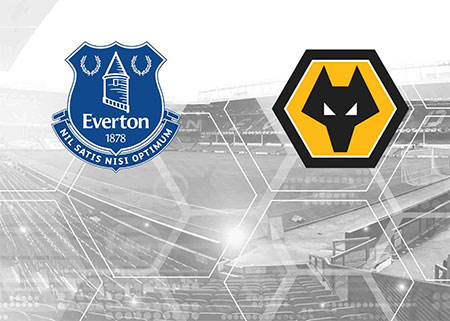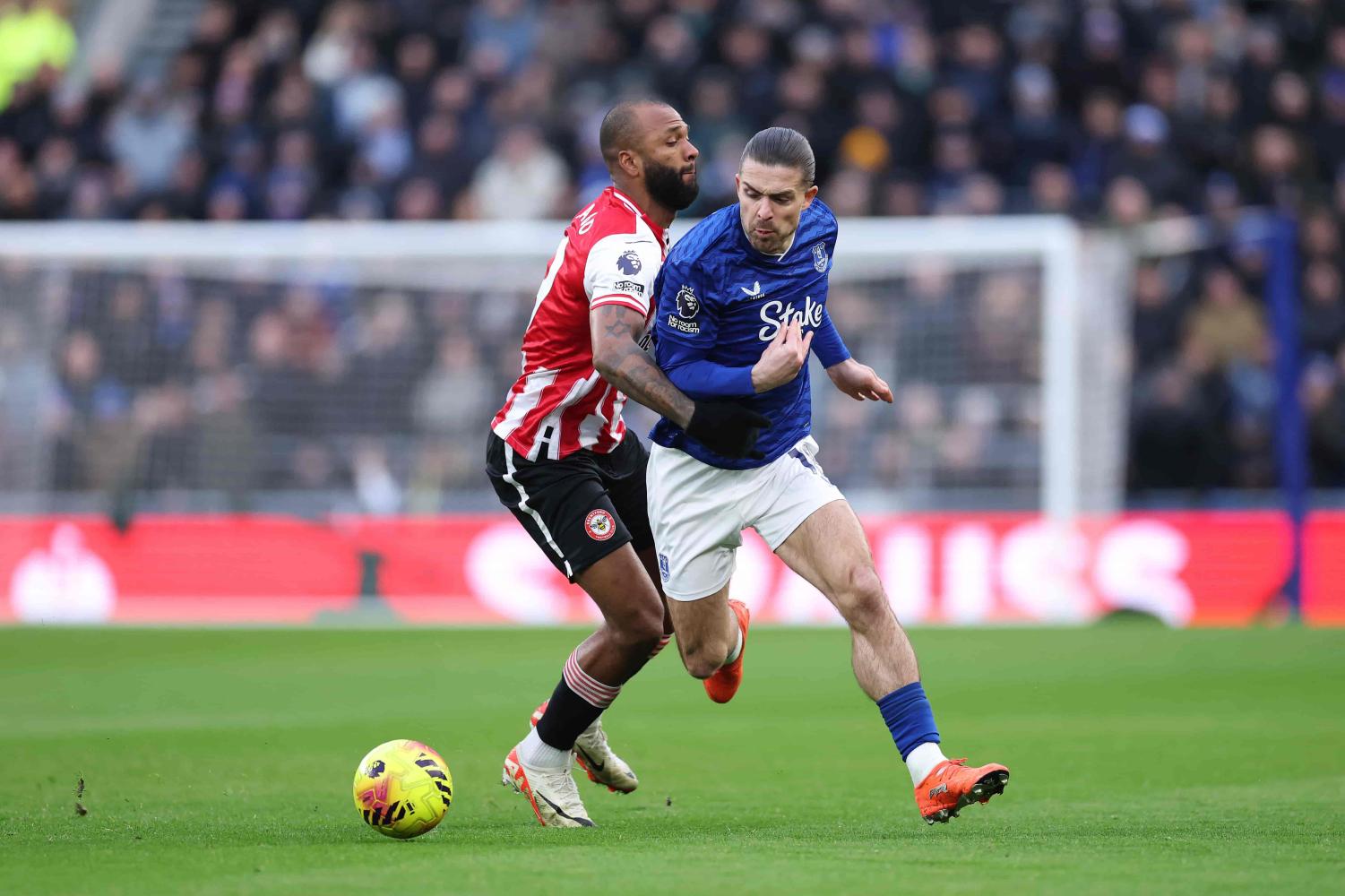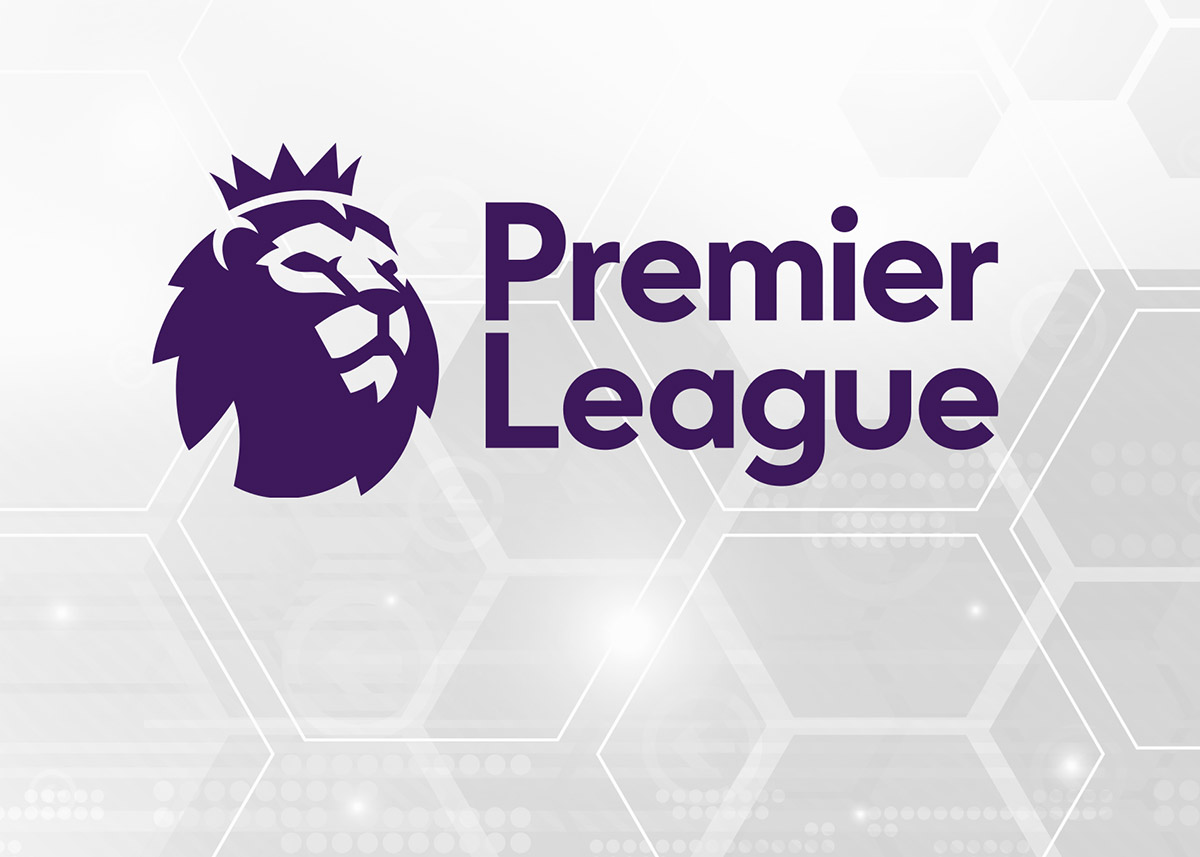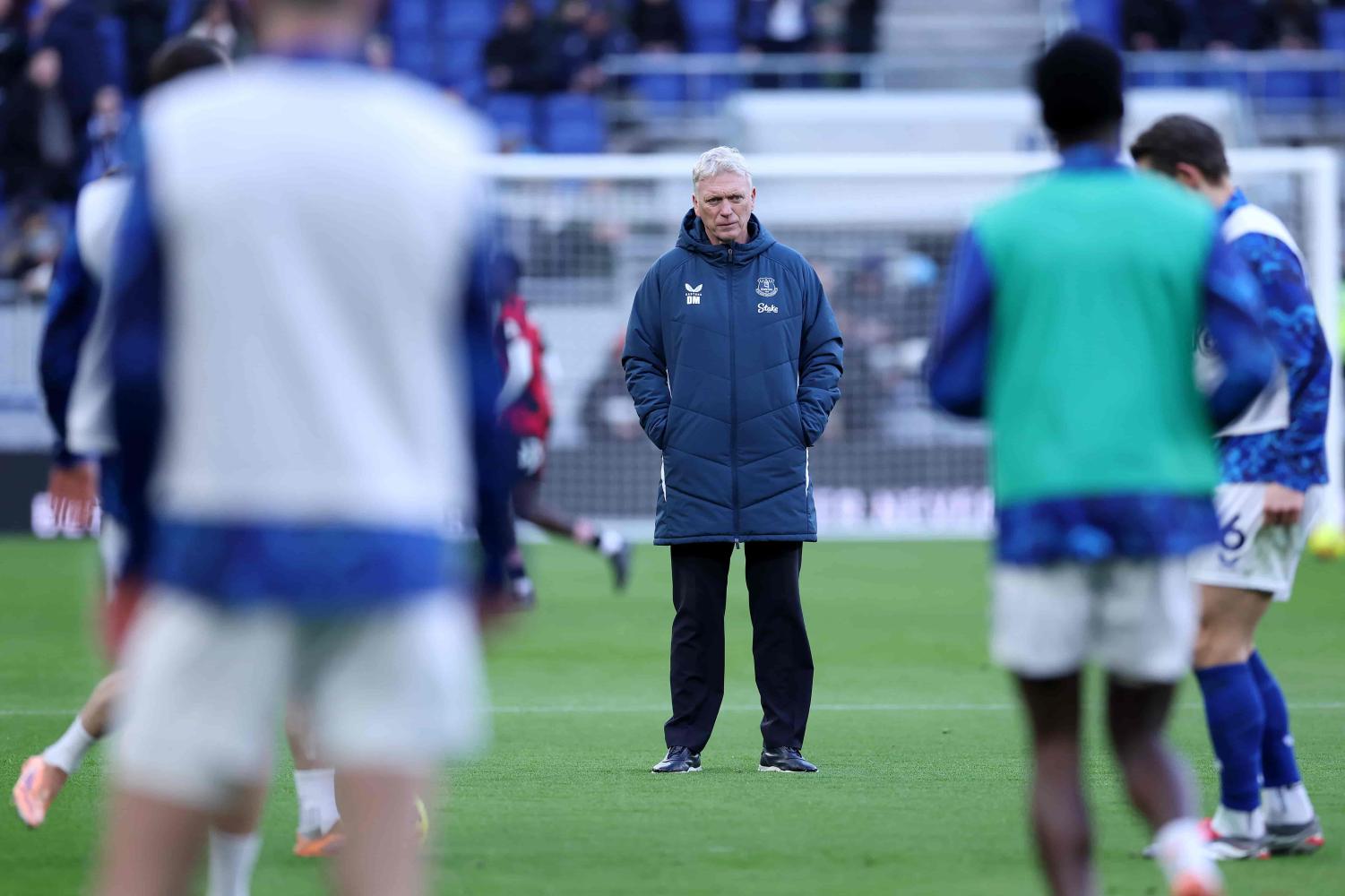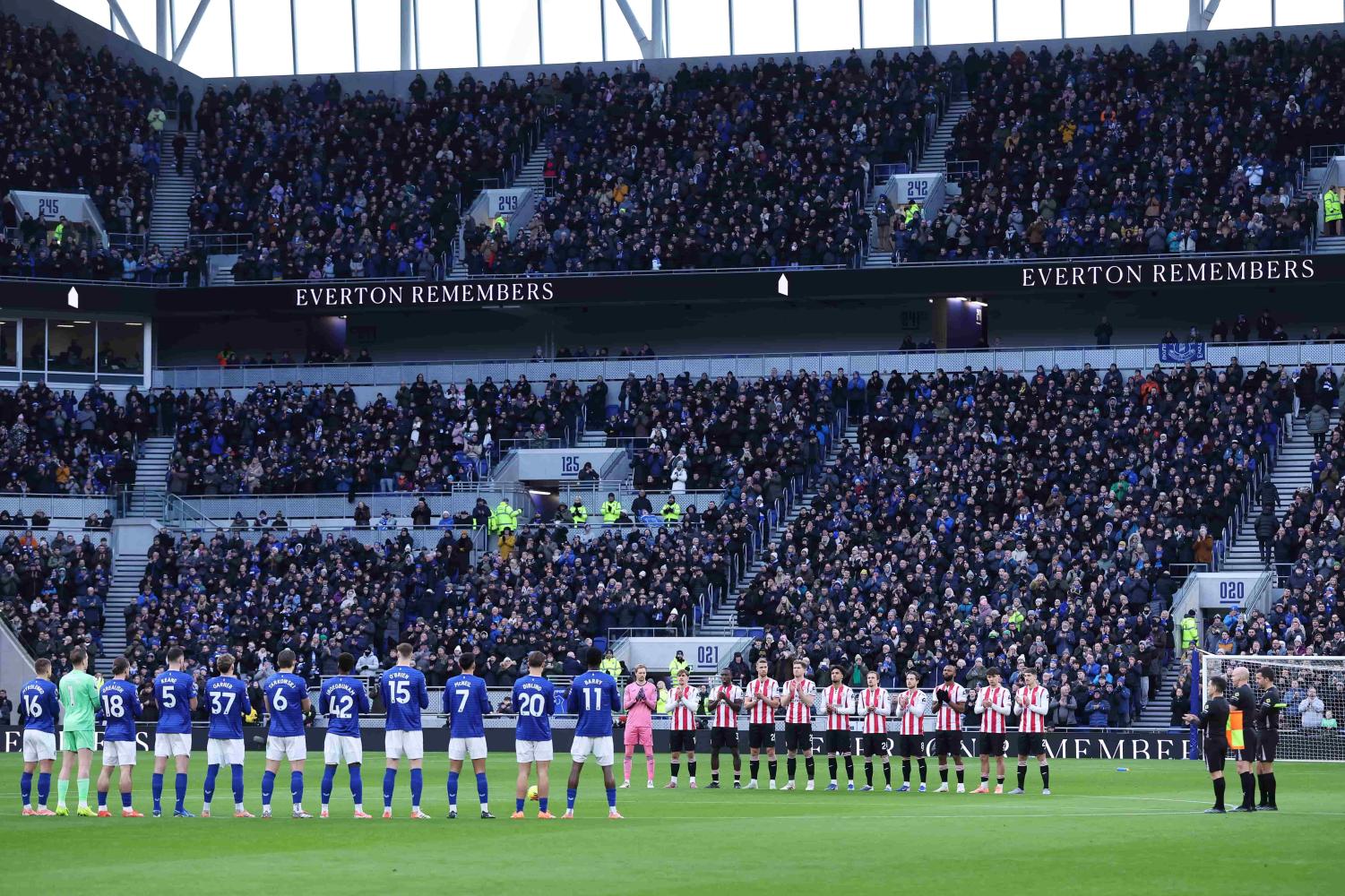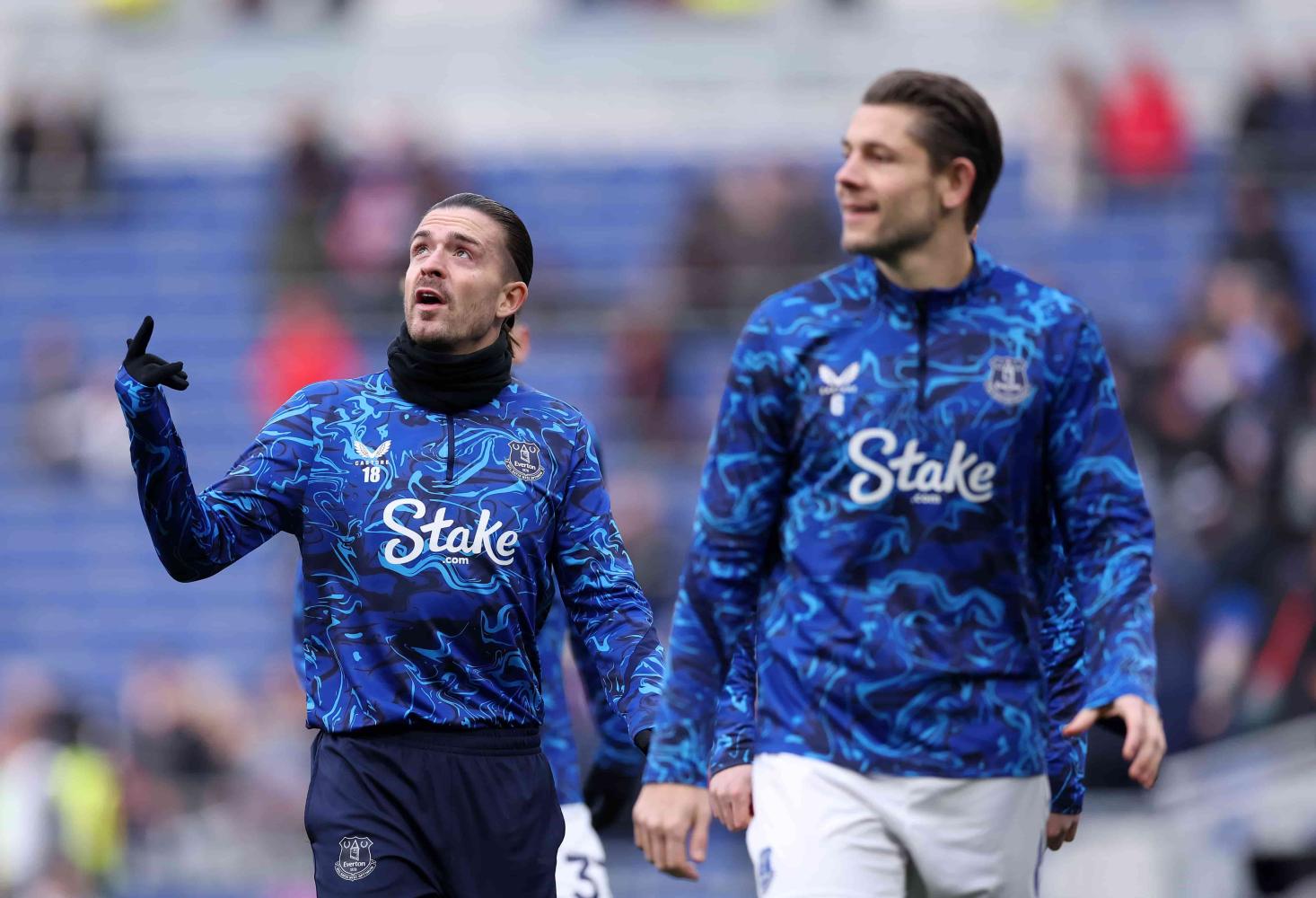XI: MOYES'S ERA OF STABILITY (2002-2013)
The Coming of the Moyessiah
It took Bill Kenwright less than two days to officially unveil the relatively unknown David Moyes following the unceremonious departure of Walter Smith in March 2002; the irony being that Walter's last task was to recommend the his fellow Scot with the piercing blue eyes as his replacement. Widely regarded as one of the best young managerial prospects in the game at the time, Moyes had been courted by Manchester United as replacement for Steve McLaren — and, by implication, a future successor to another canny Scot, Alex Ferguson — but the 38 year-old former Celtic defender elected to stay at Preston North End and continue his football management education in the one-time English First Division.
In his time at Deepdale, Moyes had guided Preston from the depths of the Third Division to the brink of the Premiership; he was denied a historic place in the top flight a year before his move to Everton when his team lost the First Division play-off final to Bolton Wanderers. Kenwright is believed to have drawn up a £1m compensation package to persuade the Lancashire club to part with Moyes who had, by this stage, made up his mind that Goodison Park was the place he wanted to be.
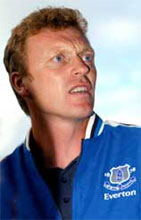 |
| David Moyes: An instant hit after assuming the Goodison hotseat in March 2002 |
His first game in charge came against Fulham, just 48 hours after he signed on the dotted line and, fittingly, it followed a fairytale script. With little knowledge of his new charges, Moyes handed the responsibility of team selection to Reserve team coach, Andy Holden, but his arrival had clearly impacted the players who engineered a goal within 27 seconds of the game. David Unsworth's explosive left-foot volley was followed 12 minutes later by a Duncan Ferguson goal and Everton were on their way to a morale-boosting victory, their first in the league since mid-January.
Moyes's first two games in charge were in stark contrast to the last weeks of the Smith era. When Thomas Gravesen was sent off midway through the first half of that win over Fulham and a Steed Malbranque goal seven minutes cut their lead in half, Everton made a dramatic — and often desperate — defensive stand to preserve the lead and earn three priceless points.
A week later, Moyes's team went to Derby County and scored four goals in a thrilling seven-goal rollercoaster, exhibiting a brand of cavalier, free-flowing football that had long-since disappeared under Smith's tenure. Although the team faltered in the remaining seven matches, winning only twice more and shipping a further eight goals, Premiership safety was secured — along with a 15th-place finish — and David Moyes had breathed fresh life into a desperately pessimistic club.
He was quickly labelled the "Moyessiah" for the speed with which he had seemingly turned the tide and the promise that the future now held under this new breed of tracksuit manager... but the manager's rollercoaster had only just begun.
As he prepared for his first full season at the Everton helm as a Premiership manager, Moyes set about the task of clearing the decks of some deadwood. Paul Gascoigne had prematurely jumped ship within 48 hours of Moyes's appointment as manager, moving to Burnley on a free transfer, and all three of David Ginola — surely one of Walter Smith's worst acquisitions — Alec Cleland and Jesper Blomqvist were released as soon as the 2001-02 campaign was over.
The summer of 2002 was characterised by a series of innovative loan-cum-permanent transfer deals that Moyes negotiated in order to maximise his slender transfer budget. Nigerian World Cup defender Joseph Yobo arrived from Marseilles on a £1m, one-year loan with an option to make the transfer a permanent as a £4.5m, five-year deal; Brazilian midfielder Juliano Rodrigo was signed from Botafogo on the same arrangement, with £1.25m down and the possibility of a £3m permanent transfer; and Chinese international Li Tie was acquired for £200,000 from Liaoning Bodao as part of the newly-signed sponsorship agreement with Shenzen-based electronics firm, Kejian... but not without a major hiccup!
Moyes was told that the club would sign a China international under the terms of the Kejian deal and, following a scouting trip to the 2002 World Cup in Korea/Japan, the Scot had selected his man. However, on the eve of the announcement of Li Tie's signing, Liaoning balked at the terms and refused to sanction the transfer. In a bid to save face, Chief Executive Michael Dunford hastily arranged the loan acquisition of defender Li Wei Feng, also a Chinese international, and it was he and not Li Tie who was unveiled at the press conference.
Moyes, however, was keen to land his original target, and less than 48 hour later, the wrinkles with Liaoning were ironed out and Li Tie was also paraded at Goodison Park in an Everton jersey. Moyes completed his three3-week dalliance in the transfer market with the capture of England international goalkeeper Richard Wright from Arsenal.
The Birth of a Star and the Magnificent Seventh
2002-03 saw all the positive signs for future progress coming to fruition — along with a raw but stunning young talent in the shape of Wayne Rooney. It turned out to be the most exhilarating season for Evertonians since the Premiership was formed in 1992. Even though no trophy was won, and allowing for the disappointment of failing on the last day of the season to qualify for the Uefa Cup, 2002-03 was still the season that the feelgood factor returned to Everton.
The emergence of a certain boy wonder, Wayne Rooney, age 16 was a big cause for celebration, but there was a lot more to put a smile on the faces of Evertonians. The team as a whole played with a self-belief not seen for several years. When they went a goal down, they did not fold or buckle, as they frequently had in previous seasons, but instead they stiffened their resolve and often succeeded in clawing their way back into games. Time and time again, crucial goals — equalisers or winners — were scored in the last few minutes.
While the genius of Rooney was sometimes the catalyst, the main inspiration was the manager, Moyes. Since he had little money to spend, he made it abundantly clear to the players he had inherited in March that he would tolerate no shirking, but all would be given a chance to prove themselves. The players responded admirably, displaying fitness levels that made supporters wonder if some had undergone age-reduction measures!
The first explosion of joy in 2002-03 came on October 19 when Arsenal were the visitors to Goodison Park. The nation's commentators were asking if the champions Arsenal could go through the season undefeated. Arséne Wenger's team took the lead but Everton equalised through Tomas Radzinski. Then, just as injury time started ticking away, Rooney, introduced earlier as a substitute, scored a superb goal from 30 yards out. As soon as his winning goal was shown on television later that night, he became a national talking point. "Remember the name — Wayne Rooney!" cried commentator Clive Tyldesley, words that would forever be associated with a player who would go on to become the leading goalscorer in his country's international history.
Two weeks later, Everton went to Leeds, where the Blues had not won a league match for 51 years. Rooney, again a second-half substitute, had only been on the pitch for five minutes when he took possession of the ball, skipped past two defenders and scored from 18 yards out. Rooney-mania broke out again. It was the third win of a six-match winning sequence that put Everton firmly in the top six. Journalists who had largely ignored Everton for years were beating a path to Goodison Park to David Moyes. "He's got red hair, but we don't care; Davey, Davey Moyes," sang Evertonians normally averse to the colour red for obvious reasons.
The ranks of the media men were swelled by journalists from the Far East, delighted at seeing Chinese international Li Tie play an influential part in the Everton midfield. However the team stumbled over Christmas and into the New Year, drawing four successive league games and losing in the FA Cup to Third Division Shrewsbury, one of the biggest shocks in the club's history. They got back to winning ways, however, to preserve their position in the top six.
Their never-say-die attitude was perhaps best summed up in the 2-1 win over Southampton on 22 February 2003 in a game televised live. After an awful first-half performance, Everton were trailing 1-0. The second-half saw a much improved display from the Blues but the goals wouldn't come... until injury time. Goodison Park was bouncing with joy again as Radzinski leapt to equalise with a header then a minute later he romped away and thundered the ball high into the net. It had been an exhilarating turnaround and secured the erratic Canadian international a small place in Goodison folklore.
Everton supporters were by now saving their spare money and renewing their passports as it looked as though the Blues were going to qualify for European competition for the first time since winning the FA Cup in 1995. However, it was also noticeable that some of the players, notably in midfield, were tiring and during a tough run-in to the end of the season, Everton lost three out of four games, which left everything dependent on the final game.
It was at home against Manchester United who a few days earlier had clinched the Premiership title. In order to qualify for the Uefa Cup, Everton had to beat United, or draw, and hope that rivals Blackburn would lose their final game at Tottenham. But Everton lost 2-1 and Blackburn won; the Toffees fell into seventh place for the first time since their glorious win over Arsenal in October. Seven months in the top six, but nothing to show for it. Despite the setback, Moyes had been rewarded with the Manager of the Year trophy — a legendary curse that would prove to be every bit as bad as it's monthly counterpart.
Although Moyes finished his first full season with Everton in a very creditable seventh position, the fall from the Champions League positions and then ultimately from the Uefa Cup slots was hugely disappointing. There was great hope that Moyes would strengthen the squad over the summer of 2003 and go on to better things in his second full season, but the rot had already set in. First Barry Ferguson was targeted and much effort spent on securing his transfer, but that failed. Everton then very publicly turned their attention to Fulham's Sean Davis, with much the same result when he came up lame and failed the medical. With barely hours left before the 1 September transfer deadline, Moyes whisked in no less than four players: Kevin Kilbane, Nigel Martyn, James McFadden and Francis Jeffers (returning to Everton on a season-long loan from Arsenal).
The Emperor's Clothes looking threadbare?
Following a distinctly lacklustre pre-season in the summer of 2003, Everton got off to a pretty poor start and never really improved, despite the best efforts of the manager. Something was amiss: the team just was not playing like it had in the previous season. Their away record was abysmal, with only one win all season, and the live TV cameras proved to be a an ominous portent that prevented any televised wins until well into the Spring, when they pummelled Spurs in a stirring first-half display. But the game epitomized the problems in many ways, with the players failing badly
When Everton finished 7th the previous season, the players had Auriel Henry (Thierry's brother) as a fitness coach who would assess everyone's fitness levels differently; if Stubbs needed a rest he would get a day off, or if someone needed general fitness they would do a lot of swimming. The players loved it and were in peak condition. However, at the end of the season, a new contract could not be agreed with Henry, whereupon Moyes said he would do it himself! Moyes had the players running heavy drills and eventually a bust-up developed with the senior players over the manager's methods.
Most of the players were at loggerheads with Moyes regarding his training regime. With Duncan Ferguson a significant and outspoken citric of the over-emphasis on fitness, it all had the wrong impression entirely on young Wayne Rooney, who was quickly developing his own issues with the dictatorial manager. Expecting to be a first choice on the teamsheet due to his burgeoning talent and his much needed goal-scoring prowess, he became increasingly frustrated at the approach Moyes chose, playing him "sparingly", bringing him on as a substitute and expecting him to turn games when Everton were in trouble. Meanwhile, he went from strength to strength in the England side, with then head coach Sven-Goran Eriksson showing no such qualms about exploiting the boy's talents to the full.
The rumours and murmurings had started back in February, when the suggestion that Wayne Rooney would leave his beloved Blues to join Manchester United in the summer were dismissed with much ridicule. But the whispering campaign grew into a clamour over the months before and after Euro 2004, where Rooney became a full-fledged world-class international football phenomenon almost overnight — and then crashed spectacularly when he broke a bone in his foot. Amidst the euphoria, Bill Kenwright famously stated that even £50m would not be enough to buy the services of Wayne Rooney. But none of this could halt an incredible stream of players and pundits who all had the same message: Wayne could not progress in mediocrity of unfashionable Everton: he had to move to a 'Big Club'.
The clouds forming over the situation were ominous for Evertonians with the Formation Group, headed by the much despised agent, Paul Stretford, pulling the strings behind the scenes now that they had persuaded the young Rooney to join their firm earlier in the year.
A Brush with Europe's Holy Grail
Amid much confusion over just how much the player wanted it verus the degree to which he felt he was being coerced by his advisors or being pushed out of the club by his reportedly cool relationship with David Moyes, Wayne Rooney eventually left Everton at the end of summer 2014 transfer window. The fact that the deal was worth only £10m up front to Everton felt like a slap in the face to supporters who knew they were losing arguably the finest player the club's youth academy had ever produced but the £27m the Toffees ultimately earned from Rooney's transfer to Old Trafford has been credited by some with saving Everton from administration.
Kenwright's relationship with Paul Gregg, the partner with whom he purchased the club from Peter Johnson in 1999, had turned sour over the failed bid to move the club to the King's Dock and with no outside investment, Moyes was forced to operate on a shoe-string budget for much of his time at Goodison Park. The docks proposal that would have taken Everton away from their ageing home of 116 years was seen as crucial to allowing the club to compete on an increasingly uneven financial playing field but Kenwright, Gregg and the True Blue Holdings consortium fell short of the £30m needed from Everton's end to allow the project to proceed and they eventually lost preferred-bidder status and the bid collapsed.
By the time Rooney left, Moyes had already moved to acquire striker Marcus Bent from Ipswich Town for £450,000 and then pulled off a masterstroke when he plucked Tim Cahill from under the noses of Crystal Palace in a £1.8m deal from Millwall. Expected to struggle without the departed prodigy, Everton defied predictions in 2004-05 as Moyes guided them to their a fourth-place finish, their highest of the English Premiership thus far and secured a place in the qualifying round of the lucrative Champions League.
Though they lost their opening match in ominous fashion, going down 4-1 at home to Arsenal, Moyes's team lost just one of their next 12 games in all competitions, progressing to the fourth round of the League Cup and ascending to third place in the Premiership. They were beaten by Arsenal in the cup following only their second league defeat since the opening day, a 1-0 loss at Chelsea, but embarked on another seven-game unbeaten run between mid-November and Boxing Day, ensuring that they were fourth heading into 2005. With the veteran Duncan Ferguson leading the line, the fearless Cahill proving to be an inspired addition as he weighed in with 11 goals over the course of the campaign and James Beattie having been signed for £6m in the January transfer window, Rooney's departure was beginnign to fade in the memory.
The excellent work done over the first two thirds of the season threatened to unravel in February 2005, however. Another loss to Chelsea in the league and a miserable FA Cup defeat to Manchester United at Goodison Park was briefly offset by an impressive 3-1 win at Aston Villa before three more reverses on the spin, including one at Anfield against rivals for a Champions League slot, Liverpool, left Everton's place among the coveted top-four places vulnerable. They were just one point above the reds with seven matches left to play but three wins from the next five, including a memorable night at Goodison on 20th April where Ferguson headed the only goal in a stirring 1-0 win over United, was enough to secure a fourth-place finish in the Champions League.
Everton's dalliance with the European football's gravy train was, unfortunately, painfully brief and the events surrounding their elimination at the hands of Villarreal in August 2005 left an indelible scar on the collective Evertonian conscience. Though Mikel Arteta's loan move from Real Sociedad had been made permanent in June, a failure to add further quality during a frustrating summer transfer window had left the team short on firepower up front and the Blues had toiled in their Third Qualifying round first leg against the fancied Spanish club. Everton had been considered hugely unlucky to have drawn the most difficult opposition of a round that usually throws up more modest opposition from farther-flung countries and they were duly defeated 2-1 at Goodison Park, leaving them a mountain to climb in the second leg.
Moyes's charges travelled for return match in Spain full of determination, however, and though they fell behind to a 21st-minute goal that increased Villarreal's aggregate lead to 3-1, Arteta levelled on score on the night with 20 minutes to go, giving Everton hope. And they appeared to have forced extra-time with a momentum-shifting goal with 11 minutes left when Ferguson headed home a corner to spark bedlam among the away supporters. Sickenlingly, referee Pieruigi Collina, at the time arguably the most respected referee in the game, ruled the goal out for what he deemed to be a push in the box but it was never made apparent who the offender was. Everton continued to press desperately for another goal but were caught throwing everything forward as their hosts counter-attacked and Diego Forlan put the result beyond doubt with a 90th-minute clincher.
The disappointment appeared to knock the stuffing out of the team who lost six consecutive league matches and had plunged to the bottom of the Premiership and out of the Carling Cup by late October. In the meantime, having dropped into the UEFA Cup, there was more pain in European competition as they were beaten 5-2 on aggregate by Dinamo Bucharest. Four wins from their next seven in the league lifted them up to 15th and though they struggled in late December, losing another four on the bounce, the New Year brought a seven-match unbeaten sequence, six of them league wins, that lifted Everton away from relegation danger and ultimately enabled them to finish in 11th-place in 2005-06.
Moyes's High Water Mark
With reliable goalscorer Andy Johnson arriving from Palace, Joleon Lescott signed from Wolves and Tim Howard secured on loan from Manchester United, Moyes was assembling an impressive team at Goodison Park that used their recovery the previous season as a platform from which to mount a solid start to 2006-07. Eight matches unbeaten to start the season had the Toffees sitting in fifth position and though they would win just two of nine league fixtures between late October and mid-December, rhey enjoyed a good run of form that saw them defeated just three times between mid-January and the end of the season, enough for a sixth-place finish and a place in the new UFA Europa League, which replaced the UEFA Cup, for the following season.
2007-08 was, perhaps, the zenith of Moyes's time as Everton manager and when he presided over the most talented team of his tenure. Arteta and Cahill were at the peak of their powers, at £11.2m, Ayegbeni Yakubuhad become the club's record signing and Steven Pienaar had been given the same kind of opportunity to resurrect his career on Merseyside with a loan deal that Arteta himself had been given two years previously. It was a chance the talented South African grabbed with both hands, striking up a wonderful partnership with Leighton Baines down the Blues' left flank that would, after he signed permanently from Borussia Dortmund, endure for two separate spells either side of an ill-advised transfer to Tottenham in 2011.
Having hitherto been so disappointing on Continental competition under Moyes, Everton took their Europa League group by storm following an exhilarating two-legged qualifier against Ukrainian side, Metallist Kharkiv in which James Mc Fadden and Victor Anichebe scored crucial away goals to send the Toffees through. Home wins over Larissa (including the finest strike of midfielder Leon Osman's career), and Zenit St Petersburg either side of memorable European away day victories over FC Nurnberg and AZ Alkmaar propelled Moyes's men into the Round of 32 against SK Brann whom they comfortably despatched 8-1 on aggregate.
In all competitions (including the League Cup and Europa League) between 25th October and 20th December 2007, Everton went 13 games unbeaten and they entered 2008 sitting in sixth place in what was now known as the FA Premier League as opposed to the Premiership. A victory over Portsmouth at the beginning of March had the Blues sitting in fourth place and looking good bets to break the hegemony of the so-called "Sky Four" of Manchester United, Arsenal, Liverpool and Chelsea. Sadly, the effects of another crushing blow in Europe spilled over into the team's league form and just two wins from their last nine in the Premier League meant that they had to be content with fifth.
Everton's reward for their destruction of Brann had been a date with Fiorentina in the last 16 of the Europa League but, once again, they had it all to do after the first leg. A 2-0 defeat in Florence where they had performed particularly poorly, meant that the Toffees had to score at least twice in the home leg to keep their hopes of European glory alive. Though the result was as agonising as they come, the evening of 12th March under the Goodison lights is one few Evertonians who were there will forget. The supporters rose to the occasion with a raucous atmosphere that spurred Everton on to a terrific performance and a two-goal lead behind goals from Johnson and Arteta. Had the Italians' goalkeeper, Sebastien Frey, not been inspired form or their luck not been quite as with them, the third and crucial goal that Everton needed might have come. Instead, with the teams unable to be separated after extra-time, the tie went to penalties where Yakubu chipped his spot-kick onto the post and Phil Jagielka saw his strong effort beaten away by the keeper and Fiorentina emerged victorious.
With Pienaar signed on a permanent basis, Louis Saha brought in from United and Marouane Fellaini grabbed from Standard Liege at almost literally the last minute of the 2008 summer transfer window, Everton set about trying to better their placing from the previous season and break back into that top four. They made an inauspicious start to the new campaign, though, winning just twice in all competitions between mid-August and the end of October, bombing out of the Europa League qualifiers at the hands of Liege, seeing their League Cup hopes ended at the first hurdle by Blackburn Rovers and sitting in an unimpressive 15th in the league.
A strong recovery followed, however, with just two defeats in 17 games in all competitions and by mid-February, Everton sat in sixth in the table and had powered their way into the quarter-finals of the FA Cup thanks in part to Dan Gosling's dramatic winner in the dying minutes of extra-time in the fourth round replay against Liverpool at Goodison Park. Just two more losses in the final 14 matches in the Premier League between then and the end of the campaign saw Moyes's boys leapfrog Aston Villa to finish "best of the rest" in fifth again while a thrilling penalty shoot-out triumph over United at Wembley had booked the club a place in the FA Cup Final for the first time in 14 years.
Though Saha would score what was the fastest goal in the history of the Final, lashing home after just 25 seconds, Everton wilted in the heat in the national stadium and were unable to contain their richer and clearly superior opponents, Chelsea, who had deprived them of a place in the League Cup Final the season before by beatimg them over two legs in the semis. The Toffees' lead was wiped out by Didier Drogba and Frank Lampard belted home the winner 18 minutes from the end of the second half to hand the Londoners the trophy.
The goal of going one better on one or all fronts led in the summer of 2009 to the signing of talented attacking midfielder Diniyar Bilyaletdinov from Lokomotiv Moscow for £9m, experienced centre-half Sylvain Distin from Portsmouth for £5m and Dutch international defender John Heitinga from Atletico Madrid for £6.1m. The team's start to 2009-10 was rocked on the eve of the season when Lescott handed in a transfer request in order to force through a move to nouveaux riches Manchester City who had emerged as a new force in the domestic game with the takeover by Abu Dhabi United Group the previous year.
Nevertheless, Lescott was included in the starting XI to face Arsenal on the opening day but his lack of focus was evident in what ended up being a humbling 6-1 home defeat by the Gunners. He ended up getting his transfer to Eastlands for £24m prior to the transfer deadline; Everton, meanwhile, endured an erratic run of form over the first half of the season but had still managed to climb to 11th place in the Premier League by the turn of the year and advance to the Round of 32 in Europe after coming through the Europa League group stage.
Their Continental dreams were ended by a 4-2 aggregate defeat to Sporting CP of Lisbon in February 2010, however, but that, coupled with a fourth-round exit from the FA Cup at the hands of Birmingham City meant that Moyes and his players could focus on the league for the remainder of the season. After losing at Tottenham on 28th February, the Blues finished 2009-10 with an 11-match unbeaten run that included six victories which was enough to land them in eighth spot, a disappointment coming in the wake of back-to-back fifth-place berths.
Austerity and Stasis
Everton's quest to break the glass ceiling between them and that established cabal of four teams above them was consistently stymied by the vast disparity in resources. Goodison Park, with its 40,000 capacity and 4,000 seats with obstructed views was seen as a millstone around the club's neck. It was what had prompted Peter Johnson to explore relocating Everton first to Aintree and then Cronton Colliery in the late-1990s and the same impulse lay behind Bill Kenwright's attempt to build a new arena at the King's Dock in 2002. Both proposals failed but it didn't stop the club from attempting to move again in 2007 through a partnership with national supermarket chain, Tesco, who were headed by Evertonian businessman, Sir Terry Leahy.
Everton, with retail tycoon, Sir Phillip Green, as the backseat driver and his close friend casino magnate, Robert Earl, now on the Board of Directors, had hopes of pushing through a £400m redevelopment of Kirkby town centre which would entail the construction of a 50,000-seater stadium the Toffees at the edge. Located outside the limits of the City of Liverpool and six miles from Goodison Park, the proposal was met with scepticism by Everton fans and it aroused opposition from the Keep Everton In Our City (KEIOC) supporters group.
Though loathe to see the original and therefore oldest football team in the city leave Liverpool for a car park in neighbouring Knowsley Borough, KEIOC's principal objection was that the finances of the Destination Kirkby scheme as it pertained to Everton didn't stand up to scrutiny. Ultimately, it was the development's wider connotations for Merseyside and the northwest that were eventually its undoing once it was called in for scrutiny by the sitting Labour Government. In the final reckoning, it was felt that the scale of what Tesco were proposing posed too great a risk to the health of retail in the surrounding communities and Westminster refused to give it the green light. That put Everton back at square one and while a similar scheme was later drawn up involving Sainsbury's for the Walton Hall Park site just a mile from Goodison, there wouldn't be tangible progress on the club resolving its stadium issue for another decade.
In the meantime, the finances became ever tighter for Moyes who wasn't able to spend more than £1m on an incoming player between Heitinga's arrival in September 2009 and the acquisitions of Darron Gibson (£2m from Manchester United) and Nikica Jelavic (£5.5m from Rangers) in January 2012. Though the likes of Cahill and Arteta were past their best, Saha was still banging goals in when fit, Jagielka and Distin formed an excellent defensive partnership and Fellaini was establishing himself as a standout midfielder in the division.
Everton again started badly and sat 20th after six league games but just two defeats in their next 13 was yet more evidence that Moyes was consistently able to get his team back on track, even if the bulk of the matches had ended in draws and the football wasn't always the most inspiring. Still, 15th on New Year's Day, the Blues' form picked up over the second half of the season and after the frustration of being knocked out of the FA Cup at the fifth round stage by Reading, the Toffees went on a run of six wins from their last 11 matches to secure a respectable seventh place.
2011-12 followed a similar pattern, although this time it took the goals of Jelavic to spark Everton out of the torpor that had characterised the first half of the campaign. Saha was enjoying a run free of injury but wasn'r scoring, Cahill was struggling through the worst goal drought of his time at Goodison, loan signing Royston Drenthe was proving to be an unpredictable outlet on the wings and while Denis Stracqualursi was game but ultimately limited and Apostolos Vellios also falling below the required standards up front, it was clear that Moyes needed a consistent goalscorer. Enter Jelavic who was signed in the January transfer window of 2012.
Injury would delay the Croatian's debut and he wasn't able to play in front of his new fans until 10th March but when he did, his Everton career ignited with a flurry of goals characterised by the slogan, "His second touch is a celebration". He scored the winner on that home debut against Spurs and notched another eight in the Premier League before the season was out. His contribution helped Everton climb up to another seventh-place finish but perhaps Jelavic's most memorable contributions came in the FA Cup that year.
Taken to a replay by Sunderland following a 1-1 draw at Goodison Park in the quarter-finals, the Blues put on a terrific display at the Stadium of Light 10 days later, with Jelavic scoring with another first-touch finish and David Vaughan putting through his own net to set up a semi-final date with the old ememy, Liverpool. Once again, Jelavic was off the mark putting Everton into a first-half lead but a horrible Distin backpass gifted Luis Suarez a 62nd minute equaliser and with the packed Blue end fearing that the tide had turned against their side once again, Andy Carroll popped up three minutes from the end to win it for the reds.
There was a feeling now that in a decade as manager, Moyes had taken the club as far as he could and that he had placed a psychological ceiling on the team which had been borne out in the wake of this latest cup disappointment. Destined to be dogged by his "knife to a gunfight" analogy made in the run-up to a fixture at big-spending Manchester City, one that sought to highlight the financial disadvantages under which he was working compared to the Premier League's top teams, Moyes was reaching the end of his road with the Toffees. It would take another season and for Sir Alex Ferguson to be ready to relinquish the reins at Old Trafford before it happened but there was a gathering sense of that Everton were stagnating under his stewardship.
As it turned out, Moyes's final year at Goodison marked a return of the side as potential top-four challengers, albeit on a landscape in which City, as reigning Champions, were now a powerful force and Tottenham had finally got their act together to pose another rival for the Champions League spots. Never dropping below seventh place all season following back-to-back wins over United and Aston Villa to start the season, Moyes oversaw a league campaign of remarkable consistency. Steven Pienaar had returned from Spurs, new signings Steven Naismith, a free transfer from crisis-hit Rangers, and Kevin Mirallas, signed ahead of Arsenal from Olympiacos for £6m, were slotting in well and though Jelavic wasn't finding the net with the same regularity as his debut season, Fellaini had stepped up and bagged 11 league goals from midfield.
It was in the cups, however, that Moyes's team again stumbled, with the manner of their elimination from the FA Cup at the quarter-final stage against Wigan Athletic perhaps turning supporters further away from their long-standing manager. A much-changed team had succumbed in all-too-familiar fashion at second-tier Leeds United in the League Cup in September but progress in the FA Cup had been promising. Cheltenham were thrashed 5-1 in the southwest, Bolton were conquered at the Reebok Stadium 2-1 and though it took a replay, the Toffees beat Oldham Athletic 3-1 at home in the fifth round. Another home tie against a Wigan side heading for relegation offered a real chance for Everton to progress to the last four for the second season in succession but it all went horribly wrong. Managed by rthe man who would succeed him in L4, Roberto Martinez, the Latics swamped the Blues and ran out 3-0 winners, with the demeanour of Everton's players betraying, perhaps, the enveloping feeling that this was the end of the road..
Two months later, when Sir Ferguson announced his retirement, news quickly emerged that Moyes, who had run his Everton contract down in anticipation of leaving, had already been lined up as his successor at Manchester United. Kenwright claimed to have been caught off guard by the announcement but it later emerged that the younger Scot had visited the Old Trafford legend at his home to discuss the United post and it was all agreed well before the announcement made it official. It meant that Moyes took charge of his final match as Blues boss on 12 May, 2013, a 2-0 victory over West Ham at Goodison with Mirallas bagging both goals.
Moyes would leave Goodison Park without ever reaching the heights his tenure once promised but with the reputation as both the manager who brought a decade of much-needed stability to Everton and a nearly-man, one who fought financial constraints all the way but couldn't quite turn the very good team he built into a real success.


